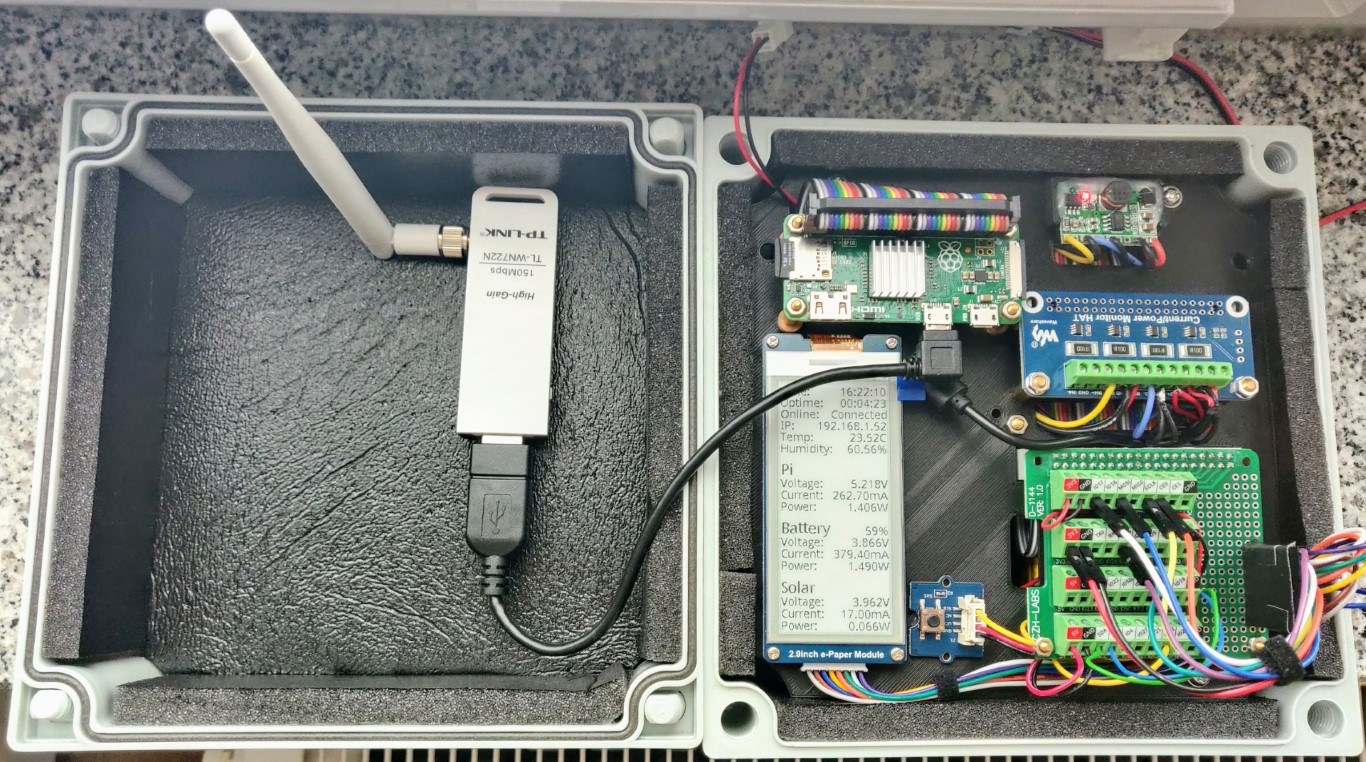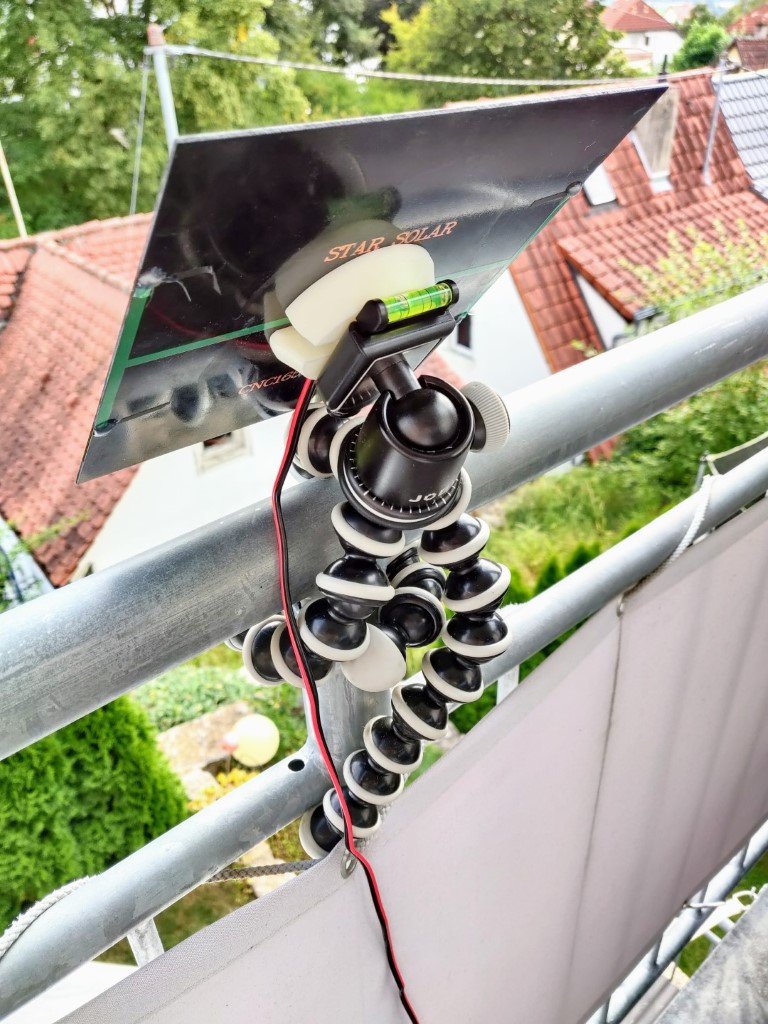This project creates a system that can run an ARM Linux server 24/7 without any external power. The system will run on batteries that are charged by a solar panel. A remote monitoring solution will track the system and collect sensor data.
Finalizing the build
To complete the project the power converter needs to be installed. It was glued into place and connected as shown in the picture on the right. The power cable from the solar panel, to the battery and to the consumer are passed through the current and power monitor.
Then the WIFI dongle got mounted to the cover with a Velcro tape and two holes got drilled for the WIFI antenna connector and the solar panel cable.

A PG7 cable gland was used to get a sealed connection for the solar power cable. And the solar panel was mounted to a tripod with the help of a 3D printed mount.


This is how the water tight enclosure looks like outside.

Lessons learned
-
Measuring the Raspberry Pi consumption from the Raspberry Pi is not possible since the script that takes the measurements increases the CPU load significantly. My readings are 100 mA off.
-
The solar cell is producing around 300-450 mA on average. But the Raspberry Pi Zero with an external WIFI dongle requires the same amount. With this configuration I’m not able to run the system 24/7.
-
A regular USB WIFI dongle is consuming a lot of power!
-
A Raspberry Pi Zero W needs around 170 mA with WIFI turned on. But mounting a U.FL RF connector to the Raspberry Pi Zero is close to impossible without professional tools. Without this connector we can’t mount a external WIFI antenna.
-
I tested a Orange Pi Zero as Raspberry Pi replacement since it has an external antenna port. It works really well and only consumes 130 mA on idle. But(!) when my scheduled scripts on the single-board computer (SBC) detect low battery they force the SBC to shut down. I found out that the Orange Pi does not do a clean shut down and will continue draining the battery when in halt state. It continues to consume 80 mA!
Next steps
My short-term solution was ordering another solar panel and connecting the two in parallel. Additionally, I’m currently working on a Savonius wind turbine design that can provide additional power.
I’m also thinking about replacing the SBC with an Arduino. When all my power concerns would be gone but I will trade it against the flexibility a full Linux system provides. I haven’t decided yet how I want to proceed..